Opening Doors to the World: Reading’s Role in Children’s Holistic Growth
Opening Doors to the World: Reading’s Role in Children’s Holistic Growth
Siby Shaji
Introduction
- In the enchanting world of childhood, there exists a magical gateway to a realm where the ordinary becomes extraordinary, and the imaginable knows no bounds. It is a realm found within the pages of books, where words come alive to weave tales of adventure, courage, and endless possibilities. Children are not merely readers; they are adventurers, explorers of far-off lands, and architects of their dreams. From the moment a parent or caregiver opens the cover of a storybook and begins to narrate tales of wonder, a lifelong journey of discovery commences.
- The profound importance of reading from early childhood cannot be overstated. Albert Einstein once remarked, “The only thing that you absolutely have to know is the location of the library.” These words reflect a fundamental truth: that reading is the cornerstone of knowledge and the key to unlocking the potential of the human mind. Early childhood, marked by its unparalleled capacity for learning and growth, is the perfect season for cultivating a love for reading, as well as reaping the myriad benefits it bestows. In this article, we embark on a journey to explore the multifaceted significance of reading during the formative years of a child’s life, focusing on its pivotal role in nurturing holistic development and the enduring impact it leaves on young minds.
—Children are not merely readers; they are adventurers, explorers of far-off lands, and architects of their dreams—
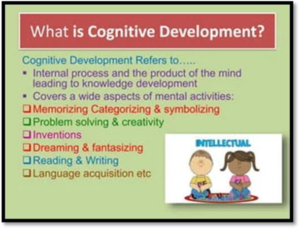
- Cognitive Development:
From the moment a child gazes upon the vivid illustrations of a picture book, their cognitive journey begins. Reading serves as a mental workout, a gymnastics routine for the developing brain. It ignites curiosity and sparks the intellectual growth that lays the foundation for future learning. Words and concepts on pages become the building blocks for comprehension, critical thinking, and problem-solving abilities, all of which are essential for a child’s academic success. Early childhood is a time of immense brain growth and development. During these crucial years, the human brain forms countless neural connections that lay the foundation for future learning. Reading plays a fundamental role in stimulating and shaping this cognitive development.
- Vocabulary Enrichment: When children are exposed to books and stories, they encounter a wide array of words and concepts they might not come across in their everyday conversations. This exposure leads to an expansion of their vocabulary. A strong vocabulary is not only essential for effective communication but also for understanding complex ideas and instructions.
- Comprehension Skills: Reading comprehension is the ability to understand, interpret, and extract meaning from written text. It involves understanding the plot, characters, and the broader context of the story. Early exposure to reading materials nurtures these skills, allowing children to become more proficient in comprehending and analyzing textual information, a skill vital for success in academics and beyond.
- Critical Thinking: As children engage with stories, they are often presented with dilemmas, conflicts, and moral choices within the narrative. Encounters with such scenarios encourage critical thinking. They learn to evaluate situations, make connections, and draw conclusions from the material they read. Critical thinking is a skill that has applications not just in academics but in everyday problem-solving and decision-making.
- Problem-Solving Abilities: Many books, particularly those designed for young readers, present characters who face challenges and solve problems. As children relate to these characters and their predicaments, they develop problem-solving skills. They learn to consider different approaches to overcoming obstacles and understand that there is often more than one way to solve a problem.
- Introduction to Abstract Thinking: Stories often contain abstract concepts and imaginative elements that require children to think beyond the literal. They learn to imagine and visualize scenarios, which is an essential skill for understanding symbolism and metaphorical language. This ability to think abstractly contributes to their creativity and capacity for metaphorical and symbolic thinking.
Thus, cognitive development is significantly enhanced by early exposure to reading materials. These skills are not just valuable in the classroom but are integral to a child’s overall cognitive growth and development.
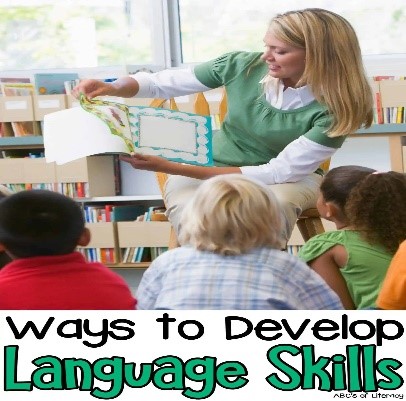
2. Language and Communication Skill:
The words in a book are like keys to a treasure chest of language. Reading exposes children to a vast and diverse vocabulary, allowing them to acquire and refine their language skills. Moreover, as they listen to stories and engage in discussions about what they’ve read, they learn the art of effective communication. This proficiency is not limited to academics; it permeates all aspects of their lives, from social interactions to self-expression. Early childhood is a critical period for language development. During these formative years, children are like sponges, absorbing linguistic input and beginning to build their foundation in communication. Reading plays a pivotal role in shaping their language and communication skills in several ways:
- Vocabulary Expansion: Exposure to a wide range of words and concepts through books is instrumental in expanding a child’s vocabulary. Unlike spoken language, books often contain a more extensive and diverse collection of words. As children encounter these words in the context of a story, they gain a deeper understanding of their meaning and usage. This vocabulary enrichment not only aids in effective communication but also enhances their ability to express themselves with nuance.
- Language Fluency: Reading aloud or being read to helps children become more fluent in their spoken language. They learn the rhythms, intonations, and cadences of their native tongue. This fluency is critical for clear and articulate communication and lays the groundwork for effective verbal expression in various social and academic settings.
- Listening and Comprehension: Storytime is an interactive experience in which children listen to the narrator or the reader. This practice of active listening is essential for comprehension. Children learn to follow a storyline, understand cause-and-effect relationships, and grasp the central themes and messages of a narrative. This skill is crucial in any form of effective communication, as it teaches them to pay attention, understand context, and interpret the meaning of spoken words.
- Oral Expression: As children engage in discussions about the stories they’ve read, they practice and refine their oral expression. They learn to articulate their thoughts, ideas, and emotions more clearly. This skill is not only essential for academic success but also for building strong interpersonal relationships and effective communication in everyday life.
- Written Communication: Reading also serves as a model for written communication. Children often mimic what they see and hear. As they are exposed to the written word in books, they become more familiar with writing conventions, spelling, and sentence structure. This familiarity is foundational for later writing skills, including penmanship and composition.
- Cultural and Contextual Understanding: Books expose children to different cultural contexts and diverse ways of communication. They learn that language is a reflection of culture, and this understanding encourages tolerance, open-mindedness, and an appreciation for the richness of human diversity.
Early childhood reading significantly contributes to the development of language and communication skills. It fosters vocabulary expansion, fluency in language, listening and comprehension abilities, oral and written expression, and a broader understanding of cultural and contextual aspects of communication.
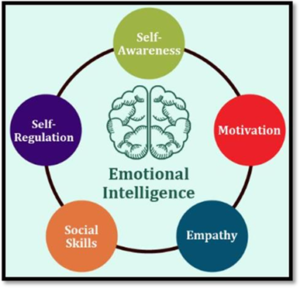
3. Emotional Intelligence: Stories are repositories of human emotions. Within the pages of books, children encounter a wide array of feelings and experiences. They learn to identify and empathize with the characters’ joys, fears, and struggles. This emotional connection is a crucial component of emotional intelligence. Emotional intelligence is the capacity to recognize, understand, manage, and effectively use one’s own emotions and the emotions of others. Reading during early childhood can significantly contribute to the development of emotional intelligence in the following ways:
- Identifying Emotions: In the pages of storybooks, children encounter characters who experience a wide range of emotions – joy, sadness, fear, anger, and more. As they read or listen to these stories, children learn to identify and name these emotions. They begin to understand that emotions are a natural part of the human experience, and they learn to differentiate between various emotional states.
- Empathy and Perspective-Taking: Through stories, children have the opportunity to put themselves in the shoes of the characters. This practice of perspective-taking fosters empathy, as children learn to relate to and understand the feelings and perspectives of others. They begin to appreciate that people may have reasons for their emotions, which is a crucial component of empathy.
- Recognizing Emotional Cues: Books often contain visual and contextual cues that indicate a character’s emotional state. Whether it’s a character’s facial expressions, body language, or the events in the story, children learn to recognize these cues and understand how they correlate with emotions. This skill is valuable in real-life social interactions, as it helps children interpret the feelings of those around them.
- Managing and Regulating Emotions: Stories often depict characters facing emotional challenges and dilemmas. Children can learn from these characters how to manage and regulate their own emotions. They see that characters in stories find constructive ways to deal with feelings like frustration, disappointment, or anger, and they can apply these lessons to their own lives.
- Conflict Resolution: Many stories involve conflicts and resolutions. Reading about how characters navigate conflicts and come to resolutions can teach children valuable lessons about resolving interpersonal conflicts in their own lives. They learn that communication, understanding, and compromise are keys to resolving disagreements.
- Self-Expression: Through discussions about stories and characters, children learn to express their own emotions and thoughts. They become more adept at communicating their feelings, desires, and concerns, which is a crucial component of emotional intelligence.
- Coping Strategies: Characters in stories often model various coping strategies for dealing with challenging situations. Children can learn how characters in books navigate adversity, find strength, and develop resilience, which are essential life skills.
Reading from early childhood fosters emotional intelligence by exposing children to a wide range of emotions, promoting empathy and perspective-taking, teaching them to recognize emotional cues, and providing examples of effective ways to manage and regulate their own emotions.

4. Imagination and Creativity:
Books are a gateway to the boundless realms of imagination and creativity. They transport children to worlds they’ve never seen and encourage them to envision the unimaginable. When children are exposed to a diverse array of books, they are inspired to think creatively and to explore their own imagination. This skill is not only invaluable in the arts but also in problem-solving and innovation. Imagination and creativity are essential facets of a child’s cognitive and emotional development. Early childhood reading fuels and nurtures these aspects in the following ways:
- Expanding Horizons: Books are windows to worlds that children might not otherwise experience. Whether it’s the enchanting landscapes of a fairytale or the far reaches of outer space in a science fiction story, reading exposes children to limitless possibilities. As they engage with these imaginative realms, their own imaginations are sparked and encouraged to explore the endless bounds of creativity.
- Visualizing and Describing: Many books provide vivid descriptions, but they often leave room for the reader’s imagination to fill in the details. Children learn to visualize scenes and characters in their minds. This practice of visualization enhances their ability to create mental images and imagine scenarios, which are crucial components of creativity.
- Creating New Stories: Reading not only fosters a love for stories but also inspires children to create their own. They might extend existing stories, develop new characters, or invent entirely new worlds. This imaginative play encourages creative thinking and storytelling skills.
- Problem-Solving: As children encounter dilemmas and conflicts in the stories they read, they often engage in mental problem-solving exercises. They may ponder how a character can escape a tricky situation or resolve a challenging conflict. These exercises stimulate creativity by requiring them to think outside the box and consider innovative solutions.
- Understanding Symbolism and Metaphor: Many stories contain symbolic elements and metaphors that go beyond literal interpretation. This exposure to abstract thinking encourages creative thinking, as children learn to recognize and interpret symbolism and metaphorical language. This skill is valuable not only in literary analysis but also in creative writing and abstract thinking.
- Role-Playing and Pretend Play: Stories often feature characters with distinct personalities and experiences. Children may engage in imaginative role-play, taking on the roles of these characters and exploring various scenarios. This form of play encourages creativity and allows children to explore different perspectives and emotions.
- Artistic Expression: Books with illustrations or descriptions of art and music often inspire children to explore artistic and creative endeavors. They may try their hand at drawing, painting, or even composing music, all of which are outlets for creative expression.
Reading is a catalyst for imagination and creativity. It opens doors to new worlds, encourages visual thinking and problem-solving, and fosters creative expression.
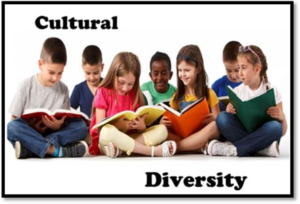
5. Social and Cultural Awareness:
Books provide windows into different cultures, societies, and perspectives. They expose children to a world beyond their immediate environment, promoting a greater understanding of diversity and multiculturalism. This broader perspective fosters open-mindedness and acceptance, vital qualities for global citizenship. Early childhood reading is a powerful tool for developing social and cultural awareness in children. It helps them understand and appreciate the diversity of the world and fosters empathy and open-mindedness. Here’s how:
- Exposure to Diversity: Children’s books often feature characters from various backgrounds, cultures, and social settings. By reading stories about characters with different identities, lifestyles, and experiences, children are exposed to the rich tapestry of human diversity. This exposure helps them understand that the world is made up of people with different beliefs, traditions, and perspectives.
- Empathy and Perspective-Taking: Through reading, children can put themselves in the shoes of characters who have different experiences or face challenges related to their cultural or social backgrounds. This practice of perspective-taking encourages empathy. Children learn to relate to and understand the feelings and experiences of others, regardless of their cultural or social differences.
- Tolerance and Acceptance: Reading about characters who may be different from them or have different beliefs helps children build tolerance and acceptance. They learn that diversity is a natural part of the world and that differences should be celebrated rather than feared. This awareness fosters a sense of inclusivity and respect for others.
- Global Awareness: Books can transport children to various corners of the world, introducing them to different countries, landscapes, and customs. Through these literary journeys, children develop a broader sense of the global community. They learn that the world is much larger than their immediate environment and gain an early understanding of global interconnectedness.
- Cultural Traditions and Celebrations: Many books introduce children to cultural traditions, festivals, and celebrations from around the world. This exposure allows children to learn about and appreciate different cultural practices, fostering a curiosity about the world and an appreciation for cultural diversity.
- Historical and Societal Context: Historical and social themes are often explored in children’s literature. Reading about different time periods, historical events, and societal issues helps children understand the context in which these events occurred. This knowledge contributes to their understanding of the evolution of societies and cultures.
- Respect for Multilingualism: Some children’s books incorporate multiple languages or introduce foreign phrases. This exposure can stimulate an early interest in language diversity and multilingualism, encouraging children to appreciate the beauty of different languages and dialects.
In conclusion, reading is a powerful tool for developing social and cultural awareness. This awareness is crucial for fostering a sense of global citizenship and preparing children to navigate an increasingly interconnected and diverse world with respect and understanding.

6. Parent-Child Bonding:
Reading with children creates a strong bond between parents and their little ones. It is an opportunity for quality time together, fostering trust and a love for learning. It’s a chance for parents to instill their values, pass down traditions, and impart wisdom. Parent-child bonding is a fundamental and deeply meaningful aspect of a child’s development, and it is strongly influenced by the act of reading together during the early years. Here’s how reading strengthens parent-child bonding:
- Quality Time Together: Reading a book with a child offers a unique opportunity for one-on-one time with a parent or caregiver. This dedicated time, free from distractions, allows for a deep and meaningful connection. It creates a sense of importance and priority for the child, as they have their parent’s undivided attention.
- Emotional Connection: Reading together often involves cuddling, hugging, and sharing the physical closeness of the book. These moments of physical connection are crucial for building emotional bonds between parent and child. The child associates reading with feelings of warmth, comfort, and security.
- Shared Experiences: When a parent reads a story to a child, they embark on a shared adventure. The characters, the plot, and the emotions depicted in the book become a common ground for the parent and child to explore together. This shared experience deepens their connection and provides a basis for conversations and memories.
- Trust and Attachment: Through reading, children come to trust their parent as the narrator of the story. They learn to rely on their caregiver for comfort and knowledge. This trust and attachment are fundamental for the child’s emotional development and sense of security.
- Encouraging Communication: Reading is not just about the story but also about the conversations it sparks. Parents often ask questions about the book or encourage their child to share their thoughts and feelings. This back-and-forth communication strengthens the parent-child relationship and helps children develop their communication skills.
- Transmitting Values and Traditions: Parents can use stories as a means to impart their values, beliefs, and family traditions. They can explain the lessons and moral messages found in the books, which helps pass down family values and create a sense of continuity between generations.
- Nurturing a Love for Learning: Reading is not only about bonding but also about instilling a love for learning. When children see their parents as enthusiastic readers, they are more likely to develop a similar passion for books and education. This shared interest can lead to a closer connection between parent and child.
- Establishing Routine and Comfort: Reading before bedtime is a common practice that creates a comforting routine for children. This ritual signals the end of the day and a time of relaxation and connection. Children often associate bedtime reading with feelings of safety and security.
- Building Memories: The books read during early childhood often become cherished memories for both parent and child. These shared stories can be recalled and treasured in later years, reinforcing the bond between them.
To sum up, parent-child bonding through reading is a multifaceted and powerful connection. These early connections are foundational for the child’s emotional and social development and help create a strong, loving relationship between parent and child.
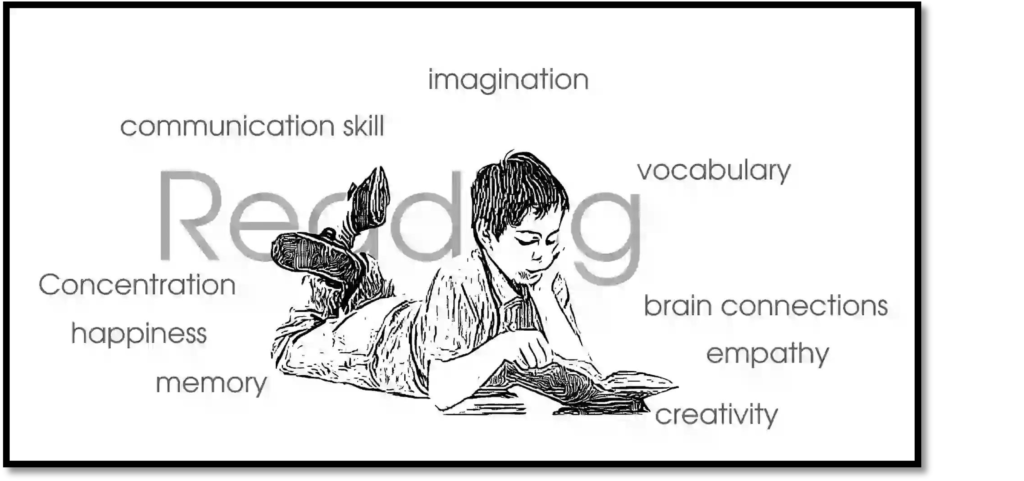
Conclusion
To conclude, early childhood reading is not merely the act of flipping through pages; it is the unfolding of a profound journey that shapes the course of a child’s life. As Dr. Seuss wisely noted, “The more that you read, the more things you will know. The more that you learn, the more places you’ll go.” Reading opens doors to knowledge, creativity, and empathy, fostering holistic development in the young minds of the future. Through stories, children learn to navigate the intricate pathways of language, emotion, and imagination, laying a sturdy foundation for a lifetime of learning and growth.
As a nurturing force, reading enhances cognitive abilities, fuels emotional intelligence, and cultivates creativity. It broadens horizons, teaches tolerance, and instills a sense of global awareness. Perhaps it’s fitting to end with the words of Emilie Buchwald, who emphasized the everlasting impact of early reading: “Children are made readers on the laps of their parents.” The time spent reading with a child is not just a momentary delight; it is an investment in a brighter, more empathetic, and culturally aware future, where the seeds of curiosity and understanding are sown in the fertile soil of childhood. So, let us embark on this journey with our young readers, for in their development, they carry the potential to shape a world where knowledge, creativity, and compassion flourish.
References:
- Collier, E. (2023, September 25). Why is reading important for children?: Developmental effects. The Hub | High Speed Training. https://www.highspeedtraining.co.uk/hub/why-is-reading-important-for-children/
- Mcilroy, T. (2023, May 22). The holistic development of a child during the early years. Empowered Parents. https://empoweredparents.co/holistic-development/
- (2023, May 11). Benefits & importance of reading to children: Children’s bureau. Child Abuse Prevention, Treatment & Welfare Services | Children’s Bureau. https://www.all4kids.org/news/blog/the-importance-of-reading-to-your-children/
- Reading and storytelling with babies and children. Raising Children Network. (2023, August 8). https://raisingchildren.net.au/babies/play-learning/literacy-reading-stories/reading-storytelling
- (2019, February 22). How reading habit from an early age promotes holistic development in children. Simba Toys India. https://simbatoysindia.wordpress.com/2019/02/22/how-reading-habit-from-an-early-age-promotes-holistic-development-in-children/
- (2023, July 27). Importance of opening the gates of library. Ashiana. https://www.ashianahousing.com/real-estate-blog/importance-of-opening-the-gates-of-library-for-your-child-in-early-age/
- Ways you can help your child develop holistically. Hindustan Times. (2016, September 8). https://www.hindustantimes.com/education/ways-you-can-help-your-child-develop-holistically/story-wE6xs5hyoXnhWl8x26ywJI.html
- Why is it important to read to your child?. Child Mind Institute. (2023, January 19). https://childmind.org/article/why-is-it-important-to-read-to-your-child/
- co.uk. (n.d.). https://www.twinkl.co.uk/teaching-wiki/holistic-development-eyfs#:~:text=Babies%20and%20young%20children%20can,which%20meets%20and%20emotional%20need.
- Team, B. L. (2023, May 26). Reading readiness: Top skills for kids to master. https://www.beginlearning.com/parent-resources/reading-readiness/#:~:text=Beyond%20forming%20a%20positive%20relationship,stories%20might%20relate%20to%20them
- Importance of early childhood reading/education. United Way of Hays County. (n.d.). https://www.unitedwayhaysco.org/importance-early-childhood-readingeducation#:~:text=Reading%20with%20young%20children%20is,reading%20time%20even%20more%20special.
- Why reading is so important in the early years. Schoolhouse Day Care. (2020, August 20). https://schoolhouse-daycare.co.uk/blog/why-reading-is-important/#:~:text=Early%20reading%20ignites%20creativity%2C%20sparks,problem%2Dsolving%2C%20and%20morality.
Cite this article in APA as: Shaji, S. Opening doors to the world: Reading’s role in children’s holistic growth. (2023, November 7). Information Matters, Vol. 3, Issue 11. https://informationmatters.org/2023/11/opening-doors-to-the-world-readings-role-in-childrens-holistic-growth/
Author
-
For the past 17 years, I have been employed as a PRT-Librarian at Somerville School Noida. My love for books and storytelling has made me an avid reader, and I take great pleasure in captivating young minds with narrated tales. My primary objective has always been to instill a passion for reading in children, and during library periods, I strive to make the experience engaging through various activities. Writing is another area where my passion lies, and whenever I find the time, I enthusiastically express my thoughts and pen down book reviews as well.
View all posts





